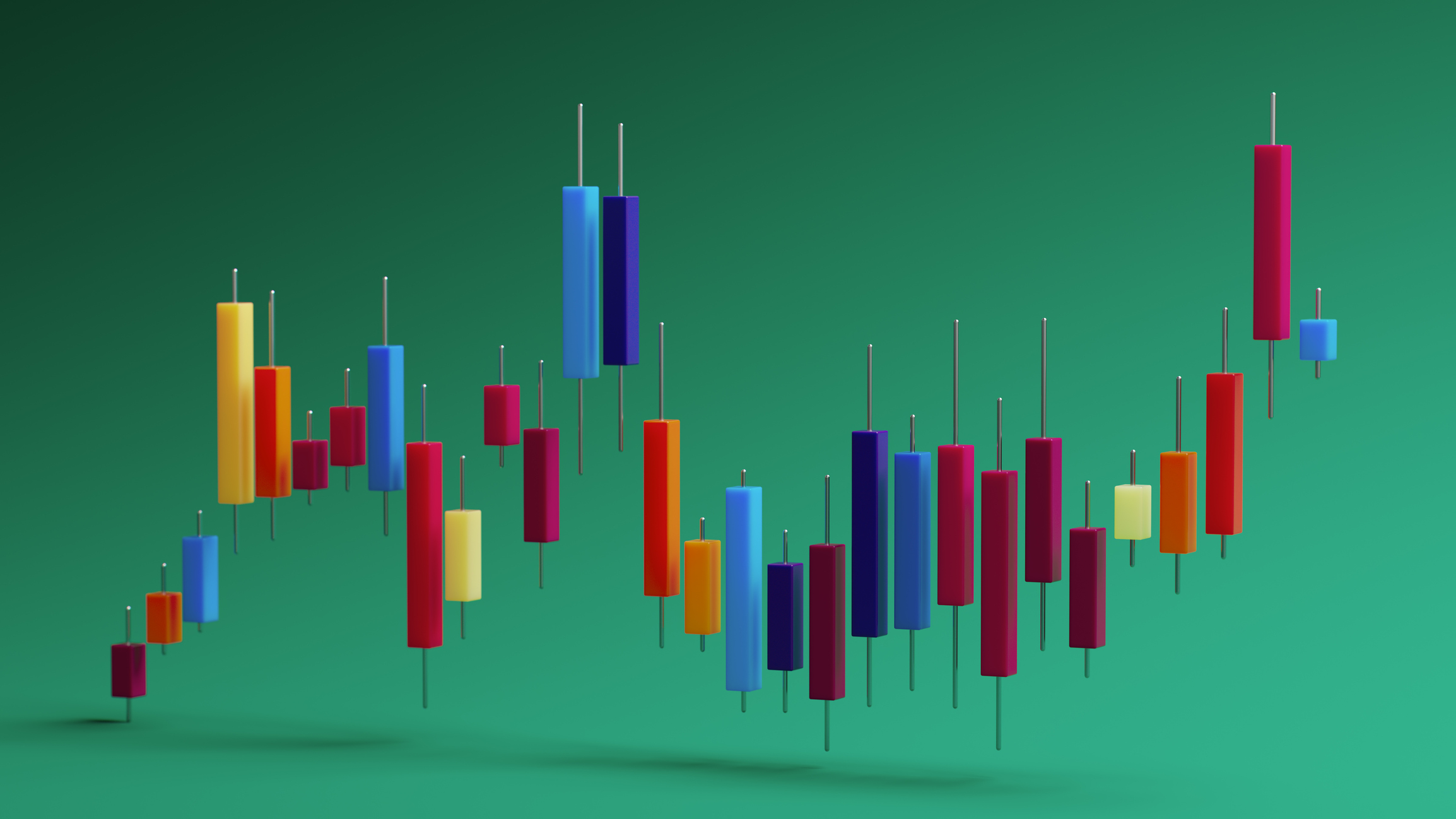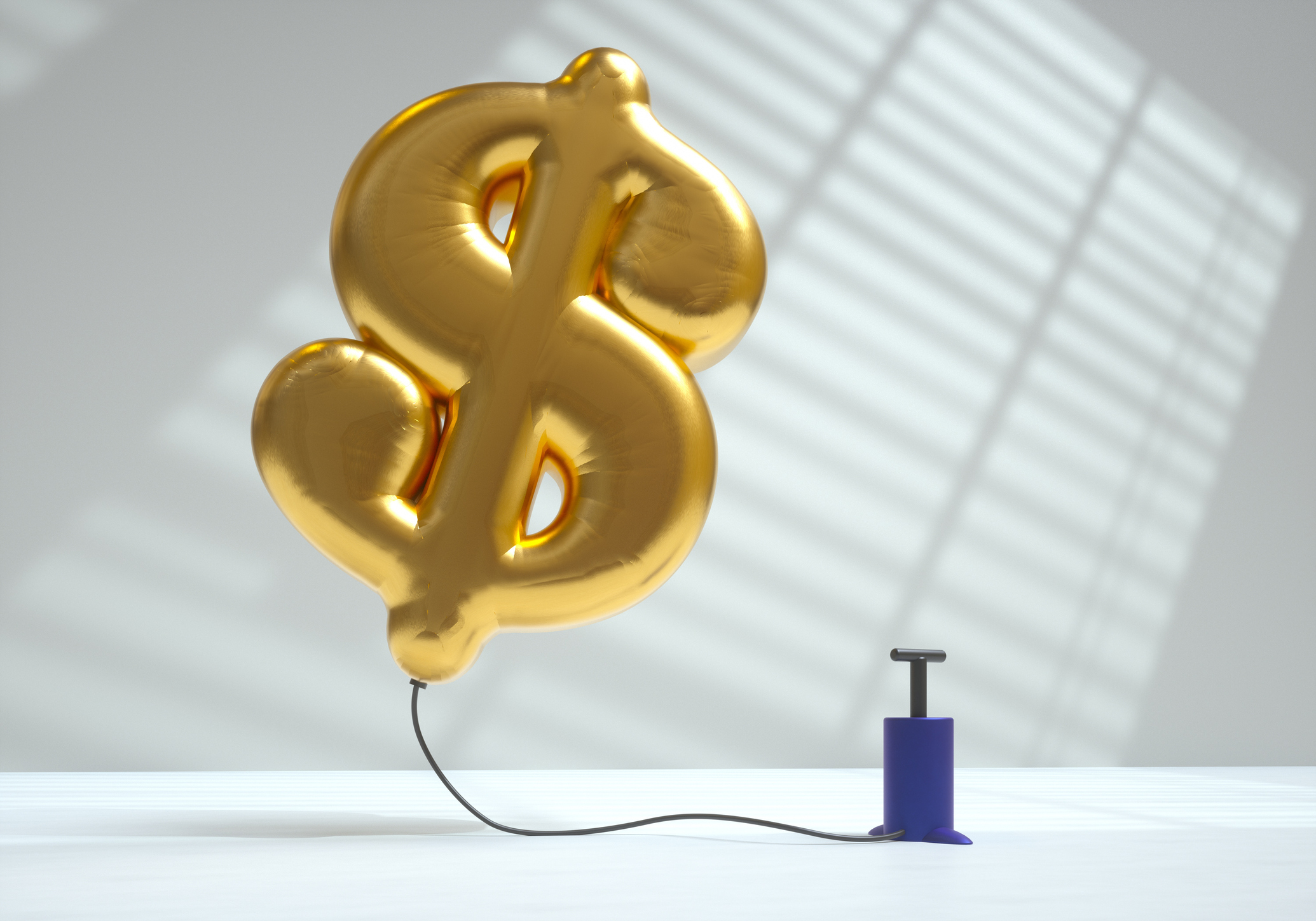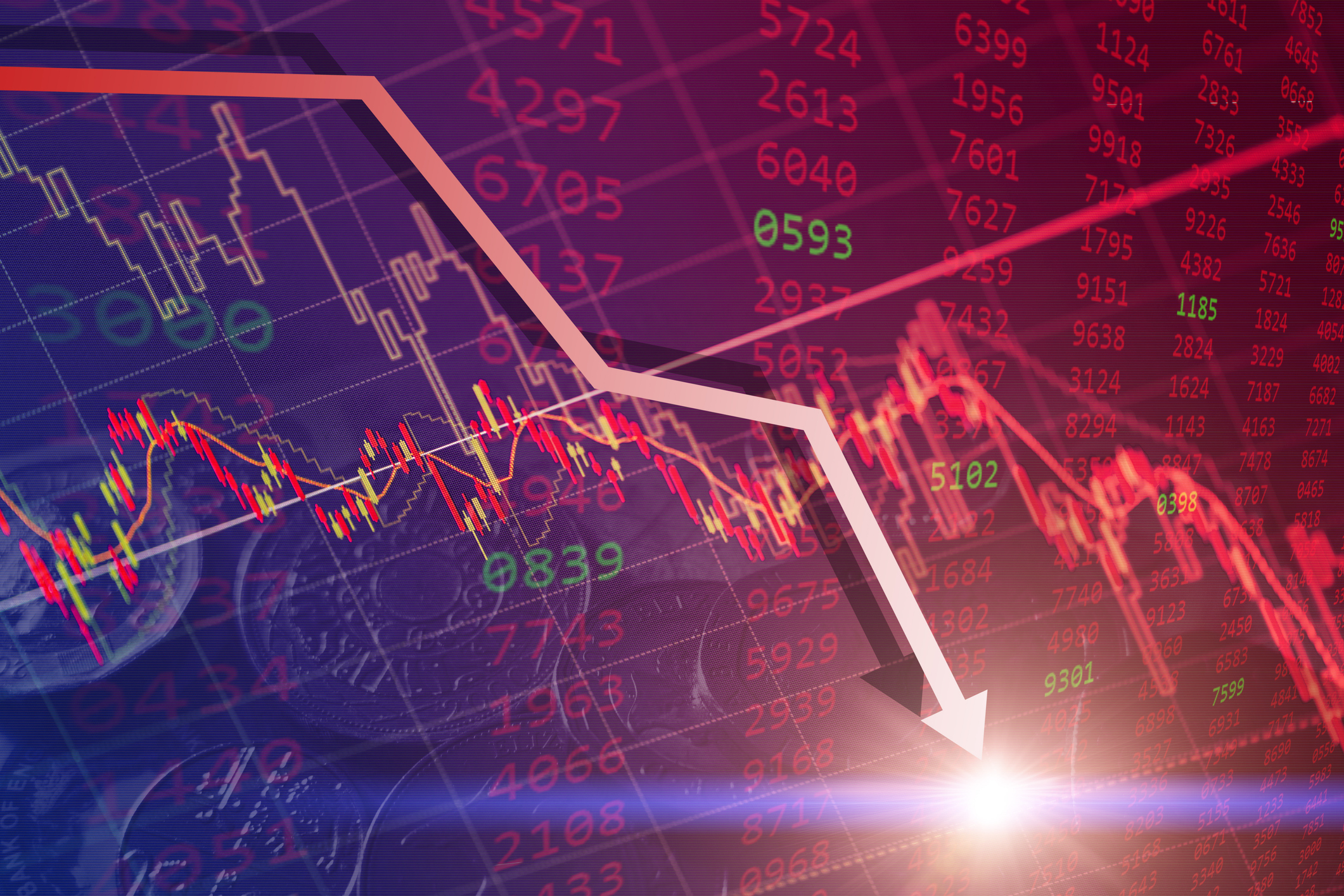How Donald Trump Invests
The Republican presidential candidate’s campaign filings show he loves junk bonds, shuns overseas investments and sure likes to dabble.

When it comes to investing in the capital markets, Donald Trump takes big risks with bonds. With stocks, not so much. Regardless, his investments could use some work.
Wading through Trump’s latest financial-disclosure report, I found a surprisingly scattershot approach to his investments in individual stocks, mutual funds, exchange-traded funds and hedge funds, worth about $114 million in all. All presidential candidates must file annual financial-disclosure reports with the Federal Election Commission.
Trump, who says he’s worth more than $10 billion (though experts say his net worth is likely smaller), makes the lion’s share of his fortune from real estate, licensing of the Trump brand and other private ventures. His 104-page disclosure report lists more than 550 ventures, ranging from hotels to travel agencies to an ice skating rink.
From just $107.88 $24.99 for Kiplinger Personal Finance
Become a smarter, better informed investor. Subscribe from just $107.88 $24.99, plus get up to 4 Special Issues

Sign up for Kiplinger’s Free Newsletters
Profit and prosper with the best of expert advice on investing, taxes, retirement, personal finance and more - straight to your e-mail.
Profit and prosper with the best of expert advice - straight to your e-mail.
But 20 pages of that report are devoted to investments in hedge funds, as well as ordinary stocks, bonds, mutual funds and ETFs. The report requires that candidates list holdings by a range in value, say $1,001 to $10,000. In each case, I’ve used the midpoint value to estimate how much Trump has in a particular investment. For instance, Trump reports owning shares of TJX Companies (symbol TJX) worth between $50,001 and $100,000, so I’ve valued his holding of the apparel retailer at $75,000.
Trump is a big fan of hedge funds — lightly regulated investment pools that give their managers a lot of leeway — and particularly hedge funds that invest in risky corners of the bond market, including junk bonds and distressed debt (debt of companies near or currently going through bankruptcy). In all, he has about $58.5 million in eight hedge funds.
Information about hedge funds is notoriously difficult to obtain. I’ve relied on a variety of sources, all of whom declined to speak for the record, to cobble together how Trump’s hedge fund holdings invest.
To approximate how the hedge funds affect Trump’s overall investments, I’ve incorporated returns from mutual funds and ETFs that invest similarly to, albeit generally much more conservatively than, the hedge funds. For instance, in place of Blackrock Obsidian, a hedge fund, I’ve used returns for SPDR Barclays High Yield Bond ETF (JNK), which tracks an index of junk bonds.
By entering this data, along with Trump’s holdings in publicly traded securities, into Morningstar Office, a portfolio-management program, I was able to obtain a rough approximation of his portfolio.
How has Trump done? Assuming no trades in the portfolio, it would have returned 1.2% over the one-year period that ended June 30 and an annualized 4.9% and 5.8% over the three-year and five-year periods that ended June 30. That would have lagged Standard & Poor’s 500-stock index by 2.8 percentage points over one year and by an average of 6.8 and 6.3 percentage points per year over three and five years. But the Trump portfolio exhibited just over half the volatility of the S&P 500 over the past three and five years. We also compared Trump’s portfolio with a customized benchmark that reflected weightings of 45% in a junk bond index, 15% in the Barclays US Aggregate Bond Index (considered a proxy for domestic high-grade bonds), 20% in the S&P 500 and 20% in cash. Against that bogey, Trump trailed by 1.3 percentage points over one year but prevailed by a smidgen over the longer periods — 0.1 point per year over three years and 0.2 point per year over five.
Still, the portfolio has plenty of flaws, starting with the sheer number of securities he owns. Trump has 151 positions in stocks, including numerous stocks held in more than one brokerage account. He holds 101 positions in mutual funds and ETFs, again including many held in more than one account, and 85 individual bonds.
Owning so many securities doesn’t make sense. What’s more, 45 of the positions are worth less than $1,000, and another 35 are worth between $1,001 and $10,000. The sum of those 80 holdings can’t amount to so much as a rounding error in Trump’s net worth. He should clean out his closets.
It’s hard to imagine any stock or fund investment of less than $1 million making sense for someone with a portfolio as large as Trump’s. But Trump has only 11 positions worth more than $1 million, and only two of them appear to be individual stocks: Royal Bank of Canada (RY) and PepsiCo (PEP).
Next, he has accounts with four different brokerages: Barclays, Deutsche Bank, JPMorgan and Oppenheimer. Many people hire multiple brokerages because they think it improves diversification. Maybe, maybe not. What it certainly does is to keep each money manager in the dark about what the others are doing, which can lead to poor results.
Investing as he has, Trump ends up with 61% of his assets in bonds — about three-quarters of which are in junk bonds and other risky corners of the bond market—plus 21% in cash and a meager 18% in stocks. That Trump invests so heavily in junk bonds is understandable. As a real estate mogul who throughout his career has borrowed liberally, Trump is investing in something he knows about. Four of his companies have gone through bankruptcy reorganizations, and he calls himself the “king of debt.” Trump’s large cash hoard, which totals $24 million, makes sense given how illiquid most of his ventures are.
At the same time, by largely forsaking stocks, he’s missing out on an opportunity to diversify his investments. Stocks and commercial real estate tend to follow different cycles of feast and famine. Owning more stocks could smooth out Trump’s financial results.
[page break]
The report shows heavy weightings in technology and financial-services stocks. Trump has roughly 26% of his stock money in tech, compared with 18% in the S&P. Most of his tech holdings are through a $3 million investment in a hedge fund called Advantage Advisors Xanthus Fund. But he also owns some $900,000 worth of Apple (AAPL) and $450,000 worth of Microsoft (MSFT).
Trump has 23% of his stock money in financial companies, a sector that accounts for just 14% of the S&P. His biggest holdings include Citigroup (C) and JPMorgan Chase (JPM).
The disclosure report includes three Trump family trusts worth a total of $1.5 million. The trusts are invested mainly in a mix of stocks, mutual funds and ETFs, including some Kiplinger favorites. The trusts have $109,000 in SPDR S&P 500 ETF (SPY), an ETF that tracks the S&P 500 index; about $100,000 is invested in both Primecap Odyssey Stock (POSKX) and iShares Russell Mid-cap ETF (IWR). Slightly smaller investments are in the institutional share class of JPMorgan Mid Cap Value (FLMVX) and DoubleLine Total Return (DBLTX), as well as in FMI Large Cap (FMIHX) and Dodge & Cox International Stock (DODFX).
Trump’s stock and mutual fund investments are true to his “Make America Great” theme. Less than 4% of his investments are in foreign stocks, excluding his hedge funds, for which such statistics are impossible to obtain. Emerging-markets stocks account for less than 0.5% of his stock money.
One change from his 2015 report: Trump has apparently sold 10 Baron mutual funds holding about $20 million. Ron Baron, the head of his eponymous fund company, had no comment. When I looked at Trump’s disclosure a year ago, I was puzzled by the Baron holdings because Trump mostly owned the funds’ retail shares. He certainly had enough invested with Baron to qualify for the lower-cost institutional shares.
Almost all of the risky debt that Trump holds is in hedge funds. His biggest investment, worth about $37.5 million, is in Blackrock’s Obsidian, a hedge fund that seeks to return about 10% annually by investing in junk bonds and distressed debt and making other unspecified bets on the bond market.
Trump also has about $6 million invested in two hedge funds run by Angelo, Gordon & Co., a firm that specializes in alternative investments: AG Diversified Credit Strategies and AG Eleven Partners. Likewise, Midocean Credit Opportunity, a $3 million holding, is a hedge fund that invests in, among other things, distressed loans.
Trump has another $9 million in three hedge funds run by John Paulson, who made much of his fortune by correctly betting that securities built on risky subprime mortgages would collapse if housing prices fell, as they did in the second half of the last decade. Paulson is described as primarily an “event-driven” manager, meaning he invests in companies going through mergers, bankruptcies or other corporate changes. But he also invests in risky debt. Paulson’s record has been inconsistent since his success during the financial crisis.
Profit and prosper with the best of Kiplinger's advice on investing, taxes, retirement, personal finance and much more. Delivered daily. Enter your email in the box and click Sign Me Up.

-
 Don't Wait Until January: Your Year-End Health Checklist to Kickstart 2026
Don't Wait Until January: Your Year-End Health Checklist to Kickstart 2026Skip the fleeting resolutions and start the new year with a proactive plan to optimize your longevity, cognitive health, and social vitality.
-
 Premium Rewards Cards: More Perks, Higher Fees
Premium Rewards Cards: More Perks, Higher FeesSome issuers are hiking the annual fee on their flagship luxury credit cards by hundreds of dollars. Are they still worth using?
-
 3 Trips to Escape the Winter Doldrums, Including An Epic Cruise
3 Trips to Escape the Winter Doldrums, Including An Epic CruiseThree winter vacation ideas to suit different types of travelers.
-
 The Santa Claus Rally Officially Begins: Stock Market Today
The Santa Claus Rally Officially Begins: Stock Market TodayThe Santa Claus Rally is officially on as of Wednesday's closing bell, and initial returns are positive.
-
 'Humbug!' Say Consumers, Despite Hot GDP: Stock Market Today
'Humbug!' Say Consumers, Despite Hot GDP: Stock Market Today"The stock market is not the economy," they say, but both things are up. Yet one survey says people are still feeling down in the middle of this complex season.
-
 Stocks Rise to the Spirit of the Season: Stock Market Today
Stocks Rise to the Spirit of the Season: Stock Market TodayInvestors, traders and speculators are beginning to like the looks of a potential year-end rally.
-
 Nasdaq Leads as Tech Stages Late-Week Comeback: Stock Market Today
Nasdaq Leads as Tech Stages Late-Week Comeback: Stock Market TodayOracle stock boosted the tech sector on Friday after the company became co-owner of TikTok's U.S. operations.
-
 Cooler Inflation Supports a Relief Rally: Stock Market Today
Cooler Inflation Supports a Relief Rally: Stock Market TodayInvestors, traders and speculators welcome much-better-than-hoped-for core CPI data on top of optimism-renewing AI earnings.
-
 The November CPI Report Is Out. Here's What It Means for Rising Prices
The November CPI Report Is Out. Here's What It Means for Rising PricesThe November CPI report came in lighter than expected, but the delayed data give an incomplete picture of inflation, say economists.
-
 Nasdaq Sinks 418 Points as Tech Chills: Stock Market Today
Nasdaq Sinks 418 Points as Tech Chills: Stock Market TodayInvestors, traders and speculators are growing cooler to the AI revolution as winter approaches.
-
 Stocks Chop as the Unemployment Rate Jumps: Stock Market Today
Stocks Chop as the Unemployment Rate Jumps: Stock Market TodayNovember job growth was stronger than expected, but sharp losses in October and a rising unemployment rate are worrying market participants.